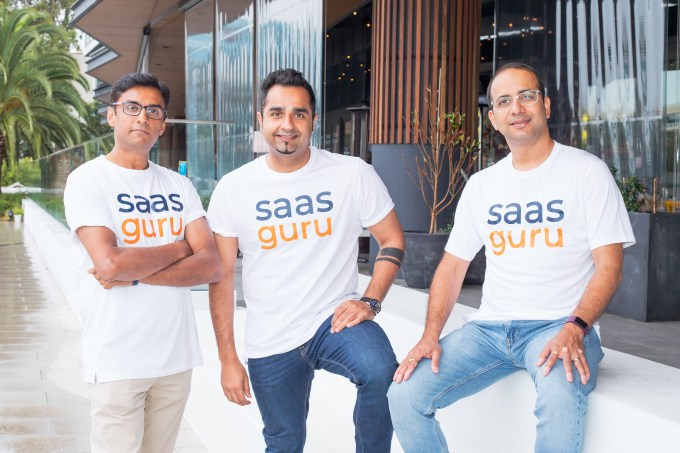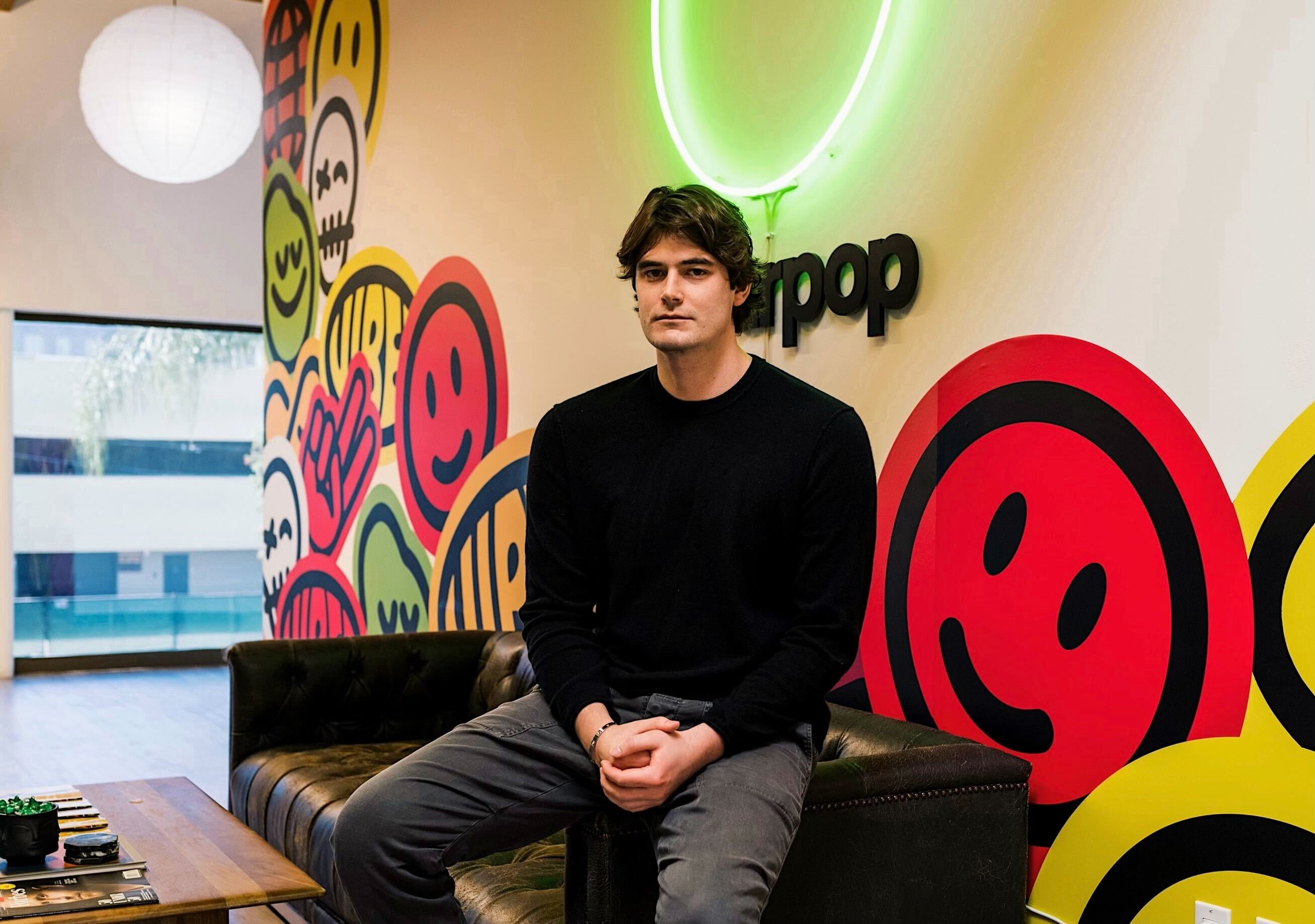Category: TECHNOLOGY
TechCrunch+ roundup: Fundraising under scrutiny, optimizing LTV, visa bulletin update
Low valuation caps allow early-stage investors to gain a larger ownership stake and reduce their risk.
However, these caps are increasingly being used as a proxy for the value of the company at the time of the investment, which in turn creates “unnecessary complexity for inexperienced founders and investors,” write attorneys Andrew Ritter, Adam Silverman and Jack Sousa, partners at Wiggin and Dana.
“With the interim rate of return method, you simply negotiate a rate of return (like an interest rate) that applies to the convertible instrument investment solely for purposes of future conversion or the amount payable in a pre-conversion exit.”
Plenty of companies that launched during downturns went on to be phenomenally successful.
During the Great Depression, Stanford grads David Packard and William Hewlett famously set up shop in a Palo Alto garage. Microsoft was founded as the U.S. was recovering from a years-long oil embargo that hobbled the economy. Slack, Airbnb, Uber and Square all rose from the ashes of the Great Recession.
As of September 2022, investors have amassed almost $300 billion in dry powder, and VC funds are still raising money by the boxcar. That’s because even during recessionary times, VC funds tend to outperform public markets.
Which explains why I’ve never heard an investor say it’s a bad time to launch a startup. But ask a few entrepreneurs, and you may get a different story.
Full TechCrunch+ articles are only available to members.
Use discount code TCPLUSROUNDUP to save 20% off a one- or two-year subscription.
According to a pre-seed report by DocSend, founders took an average of 52 meetings with investors in 2022 compared to 39 last year. At the same time, they are submitting 30% more pitch decks, but VC engagement has fallen 23%.
The idea that there’s a “good” time to launch a startup is just a bedtime story investors tell founders.
In Q4 2022, it takes more time to raise less money.
“Founders may be discouraged in this environment, but they need to remember that they have ‘currency,’ too,” said Russ Heddleston, co-founder and former CEO of DocSend at Dropbox.
Because investors spend less time reviewing pitches, concise, data-driven storytelling is more important than ever. DocSend’s report recommends using no more than 50 words per slide.
The sections of the deck that address purpose, product and business model are the meat in the sandwich, so founders should spend the most time polishing those points.
“Investors spent the third-highest amount of time reviewing the company purpose slide in pre-seed pitch decks, behind only the business model and product slides,” said Heddleston.
The idea that there’s a “good” time to launch a startup is just a bedtime story investors tell founders, and I regret any role I had in promoting it. Starting a company is an uphill slog on an uncertain path, and it’s not for everyone.
But if that’s your path, don’t let anyone talk you out of it.
Thanks for reading.
Walter Thompson
Editorial Manager, TechCrunch+
@yourprotagonist
Interim rate of return: A better approach to valuing early-stage startups
Image Credits: Supawat Kaydeesud / EyeEm (opens in a new window) / Getty Images
Low valuation caps allow early-stage investors to gain a larger ownership stake and reduce their risk.
However, these caps are increasingly being used as a proxy for the value of the company at the time of the investment, which in turn creates “unnecessary complexity for inexperienced founders and investors,” write attorneys Andrew Ritter, Adam Silverman and Jack Sousa, partners at Wiggin and Dana.
“With the interim rate of return method, you simply negotiate a rate of return (like an interest rate) that applies to the convertible instrument investment solely for purposes of future conversion or the amount payable in a pre-conversion exit.”
3 mistakes to avoid as an emerging manager

Image Credits: Westend61 (opens in a new window) / Getty Images
Deep tech VC Champ Suthipongchai is a successful fund manager, but he claims to have made plenty of mistakes along the way.
As co-founder and general partner of Creative Ventures, he raised $65 million “with fewer than 25 LPs.” Looking back, he says he initially wasted too much time chasing investors and failed to use FOMO to his advantage.
“While there’s no one right way to go about fundraising, there are a few wrong ways — and failure is a wonderful teacher,” says Suthipongchai.
Lessons for raising $10M without giving up a board seat

Image Credits: Ihor Reshetniak (opens in a new window) / Getty Images
Over the last two years, intelligent calendar platform Reclaim.ai raised $10 million “using a more incremental approach,” writes co-founder Henry Shapiro.
“We’ve done all this without giving up a single board seat, and Reclaim employees continue to own over two-thirds of the company’s equity,” rejecting conventional wisdom that founders should “raise as much as you can as fast as you can.”
In a TC+ post, Shapiro reviews the process they used to identify follow-on investors, shares the email template they used to pitch the SAFE and explains why “a larger cap table means more founder control.”
Pitch Deck Teardown: Juro’s $23M Series B deck

Image Credits: Juro (opens in a new window)
Legal tech startup Juro raised a $23 million Series B earlier this year to scale its web-based contract negotiation platform.
Juro’s founders shared their 15-slide pitch deck with TC+ and only “blurred out part of its future road map and the actual numbers for the financials.”
Dear Sophie: Are there any visas or green cards I can get on my own?

Image Credits: Bryce Durbin/TechCrunch
Dear Sophie,
I’m so worried and stressed about all the layoffs! I’m safe for now, but it has made me realize I need to take control of my own destiny.
Are there any visas or green cards that I can apply for on my own without relying on my employer?
— Silicon Stressed
4 ways to use e-commerce data to optimize LTV pre- and post-holiday

Image Credits: 123ducu(opens in a new window) / Getty Images
E-commerce startups make as much as one-fifth of their yearly revenue in the months after Black Friday/Cyber Monday. But how can brands convert shoppers who respond to a holiday promotion into repeat customers who come back all year long?
In a TC+ post, Dan LeBlanc, CEO and co-founder of data and analytics firm Daasity, provides a detailed strategy guide aimed at helping marketers boost ROI and perform cohort analysis to track lifetime value against customer acquisition cost.
“Consumer brands who know how to use their data to maximize LTV will win the holidays and set their brand up for growth well into the new year.”
Top 3 riskiest misconfigurations on the Salesforce platform

Image Credits: FedBul(opens in a new window) / Getty Images
No-code technology can be a double-edged sword.
Platforms like Zapier and Salesforce make it easy to automate tasks and workflows, but “configuring a low-code platform is so easy that the low-code administrator often does not understand the impact of checking a box,” writes David Brooks, senior vice president of product at Copado.
In a post for TC+, he breaks down the three riskiest Salesforce misconfigurations:
- Modify All Data (MAD) and View All Data (VAD)
- Sharing & Sharing Groups
- Running Apex code without the “runAs” method
Startup founders need to be data-informed, not just ‘data-driven’

Image Credits: davidf (opens in a new window) / Getty Images
According to Ann Lai, a general partner at Bullpen Capital, many startups that put core metrics front and center during fundraising are sabotaging themselves.
“Using raw, unfiltered data is common at startups that donʼt know how to properly filter their information, and they often end up offloading data irrelevant to their company and mission,” says Lai.
In a post aimed at both investors and founders, Lai offers three strategies that will help “ensure that you arenʼt just data-driven, but data-informed.”
TechCrunch+ roundup: Fundraising under scrutiny, optimizing LTV, visa bulletin update by Walter Thompson originally published on TechCrunch
Edtech Saasguru wants to fix the cloud talent shortage at scale
Cloud tech companies are facing a significant cloud skills shortage, making it hard to hire people and difficult to make sure their current workforce’s skills are up to date. Australia- and US-based Saasguru wants to narrow the gap with an edtech platform designed for new graduates and tech workers who want to become better at using cloud platforms like Salesforce or AWS. The company announced today it has raised a seed round of $4 million AUD (or about $2.7 million USD) led by Square Peg Capital, along with returning investors Black Nova and Antler.
Saasguru’s last funding was nine months ago, when it raised a pre-seed round of $1.3 million AUD. The company was founded in 2021 by Amit Choudhary, Atif Saad and Prateek Kataria. Choudhary and Saad sold their last startup SaaSfocus, a Salesforce consulting company, to Cognizant in in 2018.
So far, Salesguru has been used by 40,000 students in 20 countries, and has worked with 20 cloud consulting companies that want to train new workers, as well as refresh the skills of their existing teams. Its students range from new graduates who are starting their first jobs in cloud tech to professionals who want to earn more training certificates.
The search for people with cloud computing skills in the Asia Pacific region is urgent, with a report by AWS showing that workers needed will triple by 2025, going from 37 million workers in 2020 to 109 million. Saasguru wants to help its learners become ready for cloud tech jobs, while creating more talent at scale.
Saasguru founders Atif Saad, Amit Choudhary and Prateek Kataria
Choudhary told TechCrunch that the idea for Saasguru was planted while he and Saad were still working on SaaSfocus and struggled to compete for talent with large cloud consulting companies.
“This forced us to look at organic talent creation by hiring people from diverse non-technology backgrounds and upskilling them through a homegrown program tailor-made for Salesforce job readiness,” he said. “This became a bit of a ‘secret sauce’ for us and it helped us scale the business to over 360 consultants, with over 80% of them being trained through this program.”
SaaSfocus’ training program included hyper-personalized study plans, “TikTok-like” micro-modules of content, mentoring, peer-to-peer learning and hands-on assignments.
After selling SaaSfocus, Choudhary and Saad used this approach in a pro-bono program to help people get new jobs during COVID by teaching them Salesforce skills. Of the 50 people who took part in the program, almost all got placed in Salesforce-related jobs.
“It was the lightbulb moment when we realized this could be scaled with tech into a global business,” Choudhary said. Saasguru was launched in early 2021, combining the components of the pro-bono program with a deep tech platform.
Saasguru’s 15 programs includes ones for learning Salesforce, ServiceNow, AWS, GCP and Azure. It plans to use its funding to add more cloud certifications. Choudhary said Saasguru personalizes courses, which can take from 30 hours for self-paced cloud certification program to 300 hours for a career bootcamp, by using a two-step process. The first step is an initial assessment that analyzes the readiness of a learner and creates a learning pathway for them. Then as they start taking a course, the platform recommends the next best step to take.
Saasguru acquires customers by running free webinars with its teachers, or gurus. They also offer free one-on-one mentoring sessions on careers, interview tips and certifications, and run a Slack community. Saasguru serves both individuals and cloud consulting companies that want to build the skills of new and existing employees.
In a statement about the funding, Square Peg Capital principal Lucy Tan said, “There is a massive cloud skills shortage in the industry that is slowing down digital transformation initiatives undertaken by businesses. Universities are not well equipped to solve this skills shortage as the skills update so quickly. This means post-university upskilling is critical for continued business growth and Saasguru provides a personalised learning pathway for cloud professionals to embark on, helping them get skilled and certified in cloud technologies. This can make a meaningful impact on people’s lives from either landing them in a new career or getting salary increases.”
Edtech Saasguru wants to fix the cloud talent shortage at scale by Catherine Shu originally published on TechCrunch
https://techcrunch.com/2022/11/29/saasguru-cloud-skills-shortage/
A new tool ‘Movetodon’ makes it easier to find your Twitter friends on Mastodon
Open-source Twitter alternative Mastodon has seen sizable growth following Elon Musk’s Twitter acquisition, topping a new milestone of 1 million monthly active users in just over a week after the deal closed. But one of the many challenges for users coming to Mastodon for the first time is in re-creating their network of friends and followers they had built up over the years on Twitter. A new tool called Movetodon aims to make the transition from Twitter to Mastodon easier by allowing users to easily find and follow their Twitter friends on the open-source social network with minimal work.
There are already a few tools to find Twitter friends on Mastodon, like Debirdify, Twitodon and Fedifinder. However, some current tools ask users to connect their Twitter account, scan their network then export that data into a CSV file for import into Mastodon. This is useful if you want to simply import all your Twitter friends who have Mastodon accounts, but doesn’t allow you to easily curate your network if you’d like a fresh start.
Movetodon’s creator, a German software developer Tibor Martini, says he had used these tools himself and acknowledged they worked for his purposes. But he thought the overall experience was a little lacking.
“For a few days, I used some of the other tools, i.e. Fedifinder and Debirdify, and found them great,” he told TechCrunch, in an email. “They did what was needed — exporting your friends’ accounts from Twitter and importing them to Mastodon. However, the process to do so was not very sophisticated. You had to download a CSV file and import it back into Mastodon,” Martini explained. “Also, some of the tools didn’t have any styling at all so they looked very ‘raw.’ Those aspects made it harder for people who already struggled to find ‘the right’ mastodon instance,” he added.
Martini said he wanted to build a tool that would make it simpler for non-tech-savvy people to find their friends on Mastodon, including if they were accessing the service on mobile.
He started working on the concept for Movetodon at the end of October and then began coding around mid-November.
Though only launched five days ago, Movetodon is already becoming a popular tool for those who are trying to flee Twitter. Martini says his server logs indicate more than 50,000 users have tried Movetodon in just the past week. His post about the service was also reshared on Mastodon nearly 2,000 times and was tweeted about several hundred times.
To take advantage of Movetodon, users have to log in to both apps, Twitter and Mastodon, and authorize Movetodon to get started. The tool then automatically generates a list of friends who are also on Mastodon. In tests, we also found that Movetodon helpfully handled the API limits it encountered by pausing the list generation and displaying a countdown in seconds as to when it would resume.
Image Credits: Movetodon in action
When the list generation is complete, you’ll be able to follow individual users by clicking a button or you can click to follow them all at once. You can also sort the list by when users joined Mastodon to make the new accounts pop up to the top of the list.
The developer says his tool works by looking at the relevant fields on Twitter where users often share their Mastodon account information — like their bio, user name, location field, URL field, or in their pinned tweet. It then used Regex to extract possible Mastodon handles and URLs. With the Mastodon API, it determines if the handle is actually a Mastodon account, or if it’s something else — like an email address. The tool also fetches a list of all your current friends on Mastodon to show you if you already follow each other or not.
The data Movetodon accesses is never stored on its server, and both app connections ask for limited permissions. For instance, on Twitter, Movetodon can only read information, not post or follow. On Mastodon, Movetodon asks for limited write permissions to allow users can follow other people on the platform.
While Martini’s day job is as a Team Lead for Social Media at the German publisher stern, he says he may continue to develop Movetodon further based on user feedback. For instance, he added the “follow all” button in response to users’ requests. Users are also now asking if they could use the tool to find accounts from their Twitter Lists, as well.
Even if other Twitter alternatives added APIs in the future, Martini doesn’t think he would build tools for them, as he prefers Mastodon. (Movetodon shows he joined the open-source social network 2,245 days ago!)
“Personally, I see some advantages at Mastodon: It already has a great user base, is privacy friendly, and has already years of experience in managing and developing the platform,” he says.
A new tool ‘Movetodon’ makes it easier to find your Twitter friends on Mastodon by Sarah Perez originally published on TechCrunch
Moovit users can now track transit vehicles on map in real time
Israeli urban trip planning app Moovit unveiled a new feature Tuesday that allows users to follow a transit line’s movements along the map in real time. The new feature, which is in addition to Moovit’s real time arrival countdown, brings a new level of accuracy and certainty to users’ commutes, the company says.
“Live Location offers the ability to see transit lines, displayed on the map as icons, move along the map as they progress (or are delayed) along their journey,” Yovav Meydad, Moovit’s chief growth and marketing officer, told TechCrunch via email. “The feature is accessible from every Moovit screen where the real-time arrival countdown is available via the Action Bar along the bottom of the screen.”
The live location feature is now available for buses, trains, trams, subways, ferries and cable cars — anything with GPS tracking installed — in more than 220 cities across 38 countries, and Moovit says more will follow.
It’s a handy feature, and one that Google Maps added to its own service about four years ago.
Riders who want to see where their line currently is need to tap on the ‘Live Location’ button on the bottom bar of the screen. A map will open and an icon will show up moving along the transit line, allowing Moovit users to stare at their phones in angst, watching the little bus icon inch closer and closer to their stop.
Riders will also be able to see when the tracking data was last updated and receive service alerts for that line, Meydad said, noting that users can view several lines moving on the map at the same time.
“This additional layer of context allows users to have all they need to compare options in real-time to make the best decision for them to easily reach their destination,” said Meydad.
Moovit users can now track transit vehicles on map in real time by Rebecca Bellan originally published on TechCrunch
https://techcrunch.com/2022/11/29/moovit-users-can-now-track-transit-vehicles-on-map-in-real-time/
Dropbox acquires Boxcryptor assets to bring zero-knowledge encryption to file storage
Dropbox has announced plans to bring end-to-end encryption to its business users, and it’s doing so through acquiring “key assets” from Germany-based cloud security company Boxcryptor. Terms of the deal were not disclosed.
Dropbox is well-known for its cloud-based file back-up and sharing services, and while it does offer encryption for files moving between its servers and the destination, Dropbox itself has access to the keys and can technically view any content passing through. What Boxcryptor brings to the table is an extra layer of security via so-called “zero knowledge” encryption on the client side, giving the user full control over who is allowed to decrypt their data.
For many people, such as consumers storing family photos or music files, this level of privacy might not be a major priority. But for SMEs and enterprises, end-to-end encryption is a big deal as it ensures that no intermediary can access their confidential documents stored in the cloud — it’s encrypted before it even arrives.
Moving forward, Dropbox said that it plans to bake Boxcryptor’s features natively into Dropbox for business users.
‘Premier partner’
Founded in 2011, Boxcryptor protects companies’ data across numerous cloud services including OneDrive, SharePoint, Google Drive, and Dropbox. Indeed, Dropbox was already one of Boxcryptor’s “premier partners,” working closely with the cloud giant to ensure its encryption smarts play nicely with Dropbox’s cross-platform file storage.
It’s worth digging a little bit into the specific wording of the deal announced today though. Both companies are careful not to call this an all-out acquisition: Dropbox said that it’s acquiring “key assets,” while Boxcryptor says that Dropbox has acquired its intellectual property, including “key technology assets.”
But for all intents and purposes, this seems like a good old-fashioned acquisition. In a blog post published today, Boxcryptor founders Andrea Pfundmeier and Robert Freudenreich say that their “new mission” will be to embed Boxcryptor’s technology into Dropbox. And after today, nobody will be able to create an account or buy any licenses from Boxcryptor — it’s effectively closing to new customers.
“By providing our technology and deep-expertise to a global tech company like Dropbox, we’ll be able to better scale our security capabilities through Dropbox’s global platform and provide an elevated encryption experience for users,” they wrote. “This will ensure even more people are able to focus on the work that matters, knowing that their content is even more safe and secure.”
But there are reasons why the news as being packaged the way it has. The company is continuing to support existing customers through the duration of their current contracts. Boxcryptor has commitments and contracts in place, and it wants to ensure nothing is lost in translation — it’s stressing that no keys, contracts, or data will be transferred over to Dropbox, and everything will remain where it currently is in its German datacenters.
Dropbox acquires Boxcryptor assets to bring zero-knowledge encryption to file storage by Paul Sawers originally published on TechCrunch
Pearpop raises $18M at a $300M valuation to scale its social collaboration marketplace
In addition to the new funding, Pearpop is also announcing that it’s launching two new products called Ovation and Passport.
Ovation builds on Pearpop’s current Challenges product by allowing brands to turn customers into advocates. The product lets brands mobilize targeted audiences that have engaged with a product in the past. Mason says that every brand wants to incentivize their communities to advocate on their behalf, and Ovation makes this possible. On the other hand, customers will be able to monetize their social presence.
Passport uses blockchain technology to give creators visibility into audience engagement across multiple platforms and sources to allow brands to understand creator impact. Mason says Passport reflects Pearpop’s continued belief that data will be central to the growth of the creator economy. The platform aims to continue investing in data to support both brands and creators.
Pearpop, a marketplace for social collaborations, announced today that it has raised an extension to its 2021-era Series A funding round. The company has added $18 million to its Series A, bringing its valuation to $300 million. Since its launch in October 2020, Pearpop has raised $34 million in funding.
The new investment includes funding from Ashton Kutcher and Guy Oseary’s Sound Ventures and Alexis Ohanian’s Seven Seven Six. Blockchange Ventures, Avalanche’s Blizzard Fund and C2 Ventures also participated in the round.
Pearpop allows creators and brands to buy collaborations with celebrities like Madonna and creators like Sommer Ray. These celebrities and influencers are able to sell the chance to collaborate with them on TikTok. Or, they can run “challenges” that invite people to post using a specific prompt or sound on TikTok or Instagram for the chance to receive cash rewards determined by engagement milestones. Pearpop has attracted numerous brands including Amazon, Netflix, Chipotle, Rakuten, Universal Pictures, Sonos and Beyond Meat, as well as celebrities like Doja Cat, The Weeknd, Madonna, Shawn Mendez and Post Malone.
“We’ve reached a critical mass on the creator side, as we now have more than 200,000 on our platform,” Pearpop CEO and founder Cole Mason told TechCrunch in email. “We’ve paid out over $10 million to creators, and we’ve been proud to see how Pearpop has opened up an opportunity for creators without a massive following: 71% of earnings have gone to creators with under one million followers.”
As for the new funding, Mason says Pearpop will use it to boost hiring, advance the platform’s current functionality, build out sales partnerships and more.
“We’re going to use the funding to accelerate our tech and engineering hiring as our product features and functionality get more advanced and we leverage intelligence and data in new ways our industry hasn’t seen,” Mason said. “Beyond that, we’ll continue to build out a strong sales and partnerships team capable of attracting and partnering with some of the biggest and most iconic brands in the world.”
Image Credits: Pearpop
In addition to the new funding, Pearpop is also announcing that it’s launching two new products called Ovation and Passport.
Ovation builds on Pearpop’s current Challenges product by allowing brands to turn customers into advocates. The product lets brands mobilize targeted audiences that have engaged with a product in the past. Mason says that every brand wants to incentivize their communities to advocate on their behalf, and Ovation makes this possible. On the other hand, customers will be able to monetize their social presence.
Passport uses blockchain technology to give creators visibility into audience engagement across multiple platforms and sources to allow brands to understand creator impact. Mason says Passport reflects Pearpop’s continued belief that data will be central to the growth of the creator economy. The platform aims to continue investing in data to support both brands and creators.
Earlier this year, Pearpop launched Pearproof, a web3 app that allows creators to mint NFTs of their social media posts. Pearproof’s NFTs use a proprietary algorithm that allows the assets to gain value as a post itself garners more social engagement. These NFTs start off at a “vinyl” level on a tier system that Pearproof developed. As it gets more popular, the NFT can “level up” to silver, gold, platinum and other levels. The creator can decide what rewards are associated with these levels. The project leverages the Solana blockchain, which Pearproof chose for its low transaction costs and lesser environmental impact.
Pearpop announced $16 million in funding in April 2021, which was split between a $6 million funding round co-led by Ashton Kutcher and Guy Oseary’s Sound Ventures and Slow Ventures, with participation from Atelier Ventures and Chapter One Ventures; and a $10 million additional investment led by Alexis Ohanian’s Seven Seven Six with participation from Bessemer.
“We have no shortage of ideas in the roadmap to help Creators earn a living doing what they love,” Mason said. “Our long-term vision is to continue to unlock the value of every social media user on the planet, while setting the standard for collaboration and creator monetization.”
Pearpop raises $18M at a $300M valuation to scale its social collaboration marketplace by Aisha Malik originally published on TechCrunch
Four more days left to save on tix to TC Sessions: Space
We can’t wait to see you all in Los Angeles, California, on December 6 at TC Sessions: Space 2022. That’s coming up fast, but you know what’s coming up even sooner? Your chance to attend for just $199, that’s what. It disappears in just four short days.
Space saver: Buy your pass before December 2 at 11:59 p.m. PST — prices go up to $495 at the stroke of midnight. Why pay more if you don’t have to?
We expect several hundred attendees at this, our third space-focused event. You’ll hear from — and rub elbows with — the most influential space tech founders, investors, scientists, engineers, government officials and military brass.
Here’s just a taste of what’s on tap, and you can find the other interviews, panel discussions and breakout sessions listed in the event agenda.
Space Workforce 2030: Inspiring, Preparing and Employing the Next Generation
The dawning space age offers enormous opportunities to explore new frontiers, grow the economy in orbit and strengthen our security. Making the most of this momentous time calls for an innovative workforce that can leverage diverse experiences and perspectives to solve the hard problems we’ll encounter.
The Space Workforce 2030 pledge is a first-of-its-kind effort launched earlier this year that is bringing together more than 30 of the country’s leading space companies to work collaboratively to increase diversity across our industry to build a vibrant workforce for the future. Steve Isakowitz, president and CEO of the Aerospace Corporation, will discuss the work they’re doing to inspire, prepare and employ the next generation of scientists and engineers and how you can play a part in supporting this vital mission.
Backing Big Bets in Uncertain Times: With VC spend cooling in general, and particularly when it comes to space-related startups, what are the current priorities of investors who have backed space startups in the past? If we’re settling in for a relatively long economic downturn, what should startups expect from private space capital looking ahead to 2023? With Jory Bell, general partner, Playground Global; Mark Boggett, co-founder and CEO, Seraphim Space; and Emily Henriksson, principal, Root Ventures.
Plus, you’ll have plenty of time to meet the extraordinary mix of founders, engineers, entrepreneurs, technologists and investors that turn out. Our AI-powered event app will help you quickly find and connect with the right people — you know, the folks who align with your business interests.
TC Sessions: Space 2022 takes place on December 6 in Los Angeles, but you have only four days left until that $199 deal leaves orbit. Buy your pass by December 2 at 11:59 p.m. PST. The price increases to $495 at midnight. Don’t space out on serious savings!
Is your company interested in sponsoring or exhibiting at TC Sessions: Space? Contact our sponsorship sales team by filling out this form.
Four more days left to save on tix to TC Sessions: Space by Lauren Simonds originally published on TechCrunch
https://techcrunch.com/2022/11/29/four-more-days-left-to-save-on-tix-to-tc-sessions-space/
Software supply chain security is broader than SolarWinds and Log4J
Contributor
SolarWinds and Log4j have made software supply chain security issues a topic of intense interest and scrutiny for businesses and governments alike.
SolarWinds was a terrifying example of what can go wrong with the integrity of software build systems: Russian intelligence services hijacked the software build system for SolarWinds software, surreptitiously adding a backdoor to a piece of software and hitching a ride into the computer networks of thousands of customers. Log4J epitomizes the garbage-in, garbage-out problem of open source software: If you’re grabbing no-warranties code from the internet, there are going to be bugs, and some of these bugs will be exploitable.
What’s less talked about, though, is that these attacks represent only a fraction of the different types of software supply chain compromises that are possible.
Let’s take a look at some of the lesser-known, but no less serious, types of software supply chain attacks.
Unauthorized commits
This class of attacks describes an unauthorized user compromising a developer laptop or a source code management system (e.g., GitHub) and then pushing code.
A particularly famous example occurred when an attacker compromised the server hosting the PHP programming language and inserted malicious code into the programming language itself. Although discovered quickly, the code, if not corrected, would have enabled widespread unauthorized access across large swaths of the internet.
The security vendor landscape is selling a pipedream that “scanners” and “software composition analysis” wares can detect all of the critical vulnerabilities at the software artifact level. They don’t.
Fortunately, recently developed tools like Sigstore and gitsign reduce the probability of this type of attack and the damage if such an attack does occur.
Publishing server compromise
Recently an attacker, potentially the Chinese intelligence services, hacked the servers that distribute the Chinese messaging app MiMi, replacing the normal chat app with a malicious version. The malware allowed the attackers to monitor and control the chat software remotely.
This attack stems from the fact that the software industry has failed to treat critical points in the software supply chain (like publishing servers or build systems) with the same care as production environments and network perimeters.
Open source package repository attacks
From the Python Package Index, which houses Python packages, to npm, the world’s software now literally depends on vast stores of software packages, the open source software programmer’s equivalent of the Apple App Store.
Software supply chain security is broader than SolarWinds and Log4J by Ram Iyer originally published on TechCrunch
Lordstown Motors begins shipping its Foxconn-made EV pickup trucks
Lordstown Motors has starting shipping its all-electric Endurance pickup trucks manufactured by Foxconn, a milestone that seemed impossible earlier this year.
Lordstown Motors, which has experienced investigations, executive upheaval and a shortage of capital, said Tuesday that its full-sized EV truck received full homologation with certification from both the EPA and CARB that clears the way for the company to start customer sales.
The first batch of 500 EV pickups, made at an Ohio factory now owned by Taiwanese hardware manufacturing company Foxconn, are on their way to fleet customers, according to the company. The announcement sent shares of Lordstown Motors stock up 3.79%.
Lordstown Motors has moved from one dramatic event to another in its short life as a company. Workhorse Group founder and former CEO Steve Burns started Lordstown Motors in 2018. The startup immediately gained attention for its deal with GM to buy the legacy automaker’s soon-to-be-shuttered factory in Lordstown, Ohio. GM invested $75 million into Lordstown.
The company became a political tool at times; the unveiling of its Endurance pickup truck geared towards contractors was largely used as a campaign stop for then-Vice President Mike Pence. Lordstown also sustained a series of setbacks, which seemed to ramp up after it became a publicly traded company through a merger with a special purpose acquisition company.
In March 2021, Hindenburg Research, the short-seller firm whose report on Nikola Motor led to an SEC investigation and the resignation (and ultimately the indictment) of its founder, issued a report disputing Lordstown’s claims it had booked 100,000 pre-orders for its truck. The firm also alleged that Burns paid consultants for every truck pre-order as early as 2016 while he was leading Workhorse.
By summer 2021, Burns and CFO Julio Rodriguez had resigned, the company warned it was running low on capital and investors learned it was being investigated by the Department of Justice.
Foxconn, best known as the maker of Apple’s iPhone, came to the rescue in September 2021 and bought the Lordstown factory for $230 million. Foxconn also agreed to manufacture the pickup truck for Lordstown under a joint venture contract. Foxconn increased its investment in Lordstown Motors in November 2022 by buying $170 million in common stock and newly created preferred shares.
Foxconn holds all of Lordstown’s outstanding preferred stock and 18.3% of its common stock on a pro forma basis.
Lordstown Motors begins shipping its Foxconn-made EV pickup trucks by Kirsten Korosec originally published on TechCrunch
NopeaRide, Kenya’s first EV taxi service, shuts down
Kenya’s first fully electric taxi service, NopeaRide, is exiting the market after its parent company EkoRent OY failed to raise additional funding to keep it afloat.
NopeaRide said EkoRent Africa, the local subsidiary of the Finnish company, has filed for insolvency in Kenya, bringing to an end the operations of the all-electric vehicle taxi player, which sought to drive a shift to environmentally-friendly transport options, while stepping-up competition for early market entrants Uber and Bolt.
“We have taken our fleet of electric vehicles off the road and have notified our staff and corporate clients. We are now working with relevant authorities to ensure that our operations are wound up in accordance with local legislation,” said NopeaRide in a statement.
“We would like to extend our deepest regret to our dedicated team of staff and drivers. We would also like to thank our loyal NopeaRide customers, corporate clients and other partners who have supported NopeaRide’s vision for electric mobility in Africa,” it said.
Juha Suojanen founded EkoRent Oy in 2014 to develop solutions based on electric vehicles, and solar energy, which later led to the 2018 launch of NopeaRide in Kenya.
NopeaRide provided the charging network and the driver and rider apps, and sourced the electric vehicles. However, the drivers were expected to arrange their own financing frameworks.
The startup grew from three vehicles to 70 by the time of closure, and had also built a charging network across Nairobi after raising undisclosed funding in 2019.
Last year, NopeaRide also received €200,000 funding, a fraction of what it was raising, from EEP Africa, a financing facility for early-stage clean energy in Southern and East Africa, to build more solar charging hubs in Nairobi, and increase its service radius in anticipation of growth.
The startup said it was on a path to recovery this year, after its business was badly hit by the Covid pandemic, which led to a dip in the number of rides as people worked from home.
“In the first half of 2022 our traffic numbers grew to about the same level as before Covid-19. We also started to put more effort in the corporate segment as their employees were returning to office and managed to sign contracts with a few big international companies, some of them potentially reserving the majority of available Nopea capacity,” it said.
“However, EkoRent OY went into insolvency in Finland and was unable to secure additional financing to grow the business in Nairobi to the next level.”
NopeaRide, Kenya’s first EV taxi service, shuts down by Annie Njanja originally published on TechCrunch
https://techcrunch.com/2022/11/29/nopearide-kenyas-first-ev-taxi-service-shuts-down/



